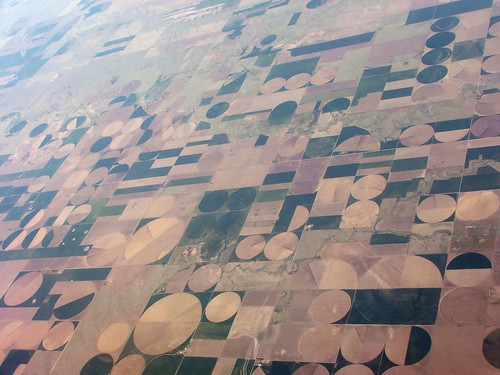"Sir, does mastery count for more than the test mark?", asked one of my Year 7 students this week. I beamed back - "YES!" Slowly but surely, I'm weaning this class to look beyond their scores ("You got 95%! I got 98%!" ... yes - it's a high achieving class :-) ) and focusing on mastery. Recently I have been making little mini-report cards which I staple onto the end-of-topic test paper:
My classes now have a symbolic language for achievement levels : the red dolphin stamp is 'Not Demonstrated' and 'Starting Out', the orange seahorse is for 'Progressing', and the orange killer whale is for "Mastery". If you get Mastery for all the standards, you also get the blue shark. I find the visual imagery helps focus on achievement of the standards. And it doesn't just work for Year 7 - even my Year 12 students like the blue shark.
My goal with these mini report cards is to make the standards and the student's achievement of those standards prominent - the topic test score is there, but it doesn't dominate the feedback. Why? Because even in this high achieving class, a score of 90% means there is something students can improve on - and I want to focus on that specific item. I try to write a helpful comment, focusing on the standards that need work and some ideas how the student can advance that standard. While the students are looking at their test, I walk around the class and try to chat to every student about their achievement in terms of the standards and what we can do to raise them (that can be hard with 28 students in 30 minutes!).
These little report cards though reveal a deeper change in my approach to Standards Based Grading....
SBG: Where I'm at now
Time pressures have taken their toll on my loftier goals of high precision SBG implementation - and I have found I'm migrating closer to what Frank Noschese calls "
Keep It Simple Standards Based Grading. Now that I have simplified the system, I find it also makes it clearer and more approachable to students.
Less standards per topic - especially for junior classes. My lists are still too long for senior classes - mainly because I am trying to cover all the syllabus points (there are a lot!).
Achievement levels: I'm happy with the language of my achievement levels "Not Demonstrated/Starting Out/Progressing/Mastery" - I believe they give clear and honest feedback without being discouraging - they don't say 'you failed' - they say 'you're not there yet'. I'm not comfortable with a simple Yes/No binary decision because I want the levels to support
my goals for student motivation and engagement - to reinforce they are on a learning path - I want to recognise their 'progress so far'. A sheet full of 'No' results isn't going to encourage lower achieving students.
The role of quizzes: I have effectively stopped using quizzes for grades. Woah - that's a big departure from the SBG ethos! Why? Because I believe that meeting standards once in a quiz isn't enough : the student has to retain the standard. So for me, the end of topic test does matter. If a student could demonstrate the standard in quizzes during the topic, but can't demonstrate them at the end of the topic, I think there is a problem. But I haven't abandoned quizzes - on the contrary, they are a key part of my formative assessment strategy. I still give regular quizzes and use the dolphins, seahorses, killer-whales and blue sharks to give feedback during the topic. I do record the quiz results to help direct my teaching of the topic. But the difference is quizzes taken during the teaching of a topic don't count toward grades. I save that for the end of the topic. If a during-topic quiz shows me a few students need help on a specific standard, I give them specific support. If I see many students need help on a specific standard, then I alter the teaching the next day and put this standard in the next quiz for the whole class. So I don't do repeat attempts on quizzes, and I don't try to juggle grades based on quizzes and quiz retries.
The role of topic tests: I use the topic test to decide the level of achievement for each standard and report this to students with their topic test mark. I do this by grouping test questions against standards - either explicitly in the test design, or working backwards from a preexisting test. This does mean marking takes longer, but it gives much more useful feedback than a single test score. The results should not be a big surprise because the quizzes have been giving the student feedback along the way. Retry attempts happen after the topic test, I give students the chance to improve their topic grade by taking quizzes or alternate tests for specific standards. That's how they can change their topic grade. In my grade book I have the topic test result (which stays constant), and an array of standards achievements which can be updated by retries.
 |
Topic test result is recorded, along with initial end-of-topic achievement of standards.
I use red-orange-green traffic light indicators to quickly spot areas of concern.
Students can improve their standards results after the topic test by taking quizzes. |
The final grade: I blend the topic test (snapshot in time result), with the standards achievement levels (which students can change through post-test quizzes) - giving more weighting to the standards indicators than to the topic test results. Why? Because I want students to have the opportunity to raise their grade through further effort. This reduces test anxiety and redirects the learning focus to mastery.
And back to the blue shark .... stamps are fun - kids (and teachers!) love them. And when it comes to assessment, having a discussion about whether you got a seahorse, a killer whale or a blue shark - well it just takes some of the sting out of assessment and helps everyone realise the symbol or the grade isn't what's important : it's working towards mastery that counts.
A note on my constraints: I am the only teacher in my faculty using SBG - so I have to maintain the topic test results to allow for comparison across classes. With middle level classes, my grading system has to be consistent with other teachers (since we rank across the cohort) so my grades have to come exclusively from the tests. Perhaps one day I might be able to convince my colleagues to allow retries for the grading in these classes. For the senior years there are statutory regulations on assessment policy which are sadly high-stakes, single-attempt only assessments. So for the higher level classes, I can only use SBG to guide my formative assessment. My hope is that this translates into the summative assessment results.
Your thoughts? Have I oversimplified SBG? How could I improve this approach?























































